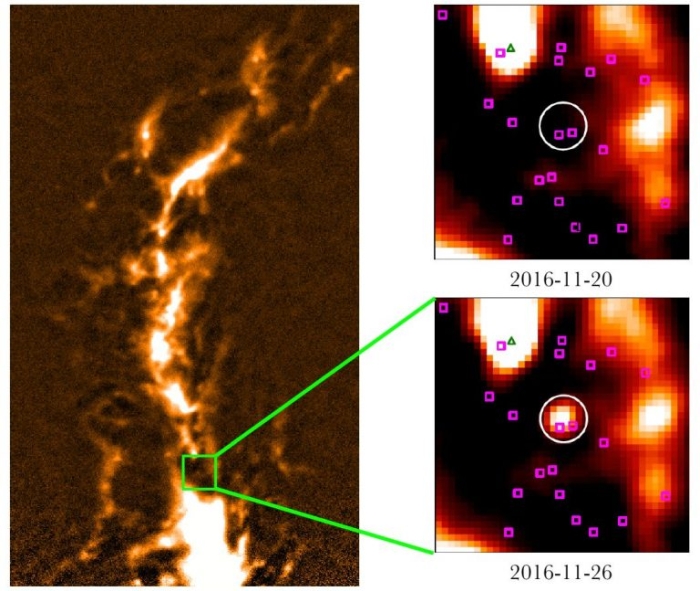Our Sun can let out some solar flare rip-snorters from time to time, but it's actually pretty quiet when compared to some other stars out there. Particularly, it seems, turbulent young stars. And astronomers have just caught one belching out a real corker.
It's called JW 566, a young star about 389 parsecs (1,269 light-years) away in the Orion Nebula. In November 2016, it erupted into a flare 10 billion times brighter than those of the Sun.
"The event," the researchers wrote in their paper, "may be the most luminous known flare associated with a young stellar object and is also the first coronal flare discovered at submillimetre wavelengths."
JW 566 is what is known as a T Tauri star, a variable star (that is, one whose luminosity varies) less than 10 million years old, and going through a period of tempestuous growth, before its massive enough for the ignition of hydrogen fusion in its core.
The James Clerk Maxwell Telescope at the Mauna Kea Observatory in Hawaii has an instrument called SCUBA-2. This is a 10,000 pixel bolometer camera, supercooled to -273 degrees Celsius (-459.5 degrees Fahrenheit), incredibly sensitive to submillimetre wavelengths.
 HECK. (East Asian Observatory)
HECK. (East Asian Observatory)
This instrument managed to capture the flare, even though it was extremely short-lived - bursting and dissipating in a matter of hours.
"Using the JCMT, we study the birth of nearby stars as a means of understanding the history of our very own Solar System," said astronomer Steve Mairs of East Asian Observatory.
"Observing flares around the youngest stars is new territory and it is giving us key insights into the physical conditions of these systems. This is one of the ways we are working toward answering people's most enduring questions about space, time, and the Universe that surrounds us."
The researchers believe the star is actively accreting matter from the disc of dust surrounding it, and the flare was caused by a disruption in the magnetic field that is funnelling the material into the star.
The reconnection of the magnetic field briefly energises non-thermal particles; and this appears as a stellar flare. Giant flares from young stars, such as this one, can help understand the dynamics of this magnetic disruption and reconnection.
The team will be continuing to monitor the star as part of the JCMT Transient Survey, in the hopes of catching it in the act of another tremendous belch.
The study has been published in The Astrophysical Journal, and can be read in full on pre-print resource arXiv.
